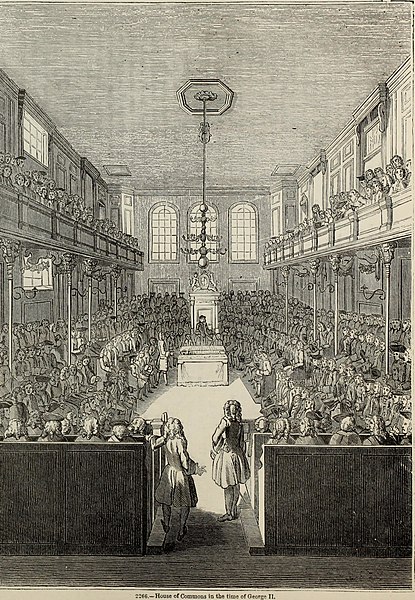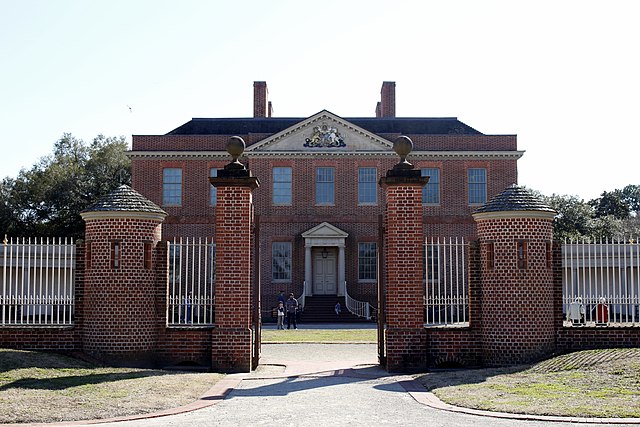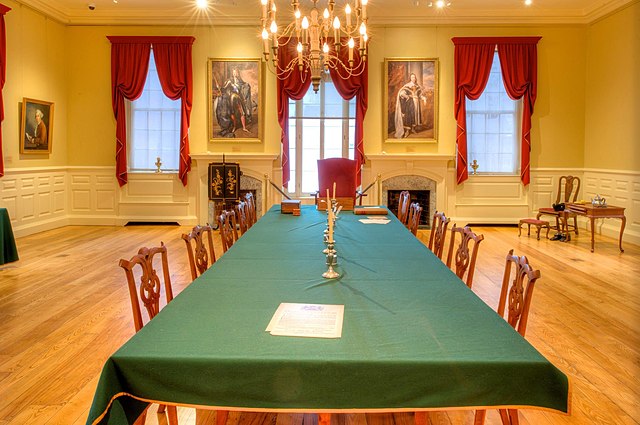Colonial government in the Thirteen Colonies
The governments of the Thirteen Colonies of British America developed in the 17th and 18th centuries under the influence of the British constitution. After the Thirteen Colonies had become the United States, the experience under colonial rule would inform and shape the new state constitutions and, ultimately, the United States Constitution.
George III was king during the American Revolution and was the last monarch to reign over the Thirteen Colonies
The House of Commons during the reign of George II
Governor's Palace at New Bern, North Carolina
Council Chamber of the Royal Governor, Old Statehouse, Boston
The Thirteen Colonies were a group of British colonies on the Atlantic coast of North America during the 17th and 18th centuries. Grievances against the imperial government led the 13 colonies to begin uniting in 1774, and expelling British officials by 1775. Assembled at the Second Continental Congress in Philadelphia, they appointed George Washington as commander-in-chief of the Continental Army to fight the American Revolutionary War. In 1776, Congress adopted the Declaration of Independence as the United States of America. Defeating British armies with French help, the Thirteen Colonies gained sovereignty with the Treaty of Paris in 1783.
The Thirteen Colonies of British America: (Dark Red): New England Colonies (Red-Brown): Middle Colonies (Brown): Southern Colonies
Join, or Die by Benjamin Franklin was recycled to encourage the former colonies to unite against British rule.






